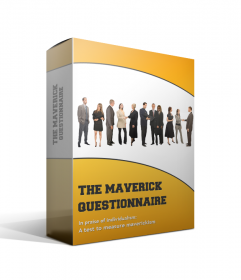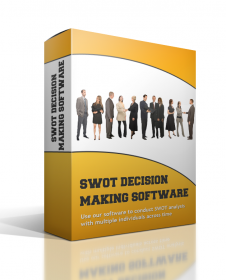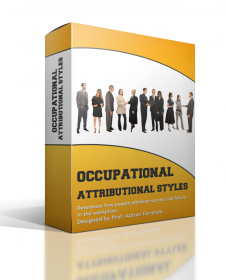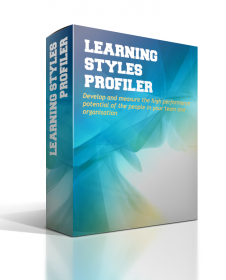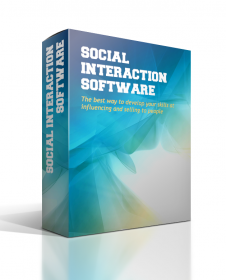How do you go about persuading and impressing important clients so that you successfully sell yourself, your ideas or your products? How do you increase their understanding of what you are trying to do?
These are typical problems faced every day by all business people who deal directly with clients. The ‘impress to sell’ method is a new sales technique that helps busy sales people overcome such problems. It can be used as a direct sales aid or in sales training.
One of the most important reasons why things go wrong in a sale is because of a communication breakdown between Seller and Client. Almost invariably this is the result of a poor fit between the Seller's presentation style and the Client's preferred style. The secret of successful selling therefore lies in ensuring that the Seller’s presentation style is compatible with the personality of the Client so that the goals of the Client are emphasised in the Seller’s presentation.
Personality psychologists (from Pavlov and Jung to modern day trait theorists such as Eysenck, Kline, and Costa and McCrae) agree that the two fundamental components of personality are: (a) the way people relate to each other and (b) their emotional characteristics. The'impress to sell' method classifies Sellers and Clients according to these dimensions. Therefore there are four types of Seller and Client.
Directors are people who are high in leadership but who control their emotions. They are therefore likely to be independent, energetic, assertive and lively. Enthusiasts are people who are high in leadership and show their emotions. Such people can be thought of as competitive, dynamic. excitable and optimistic. Team-players are low in leadership but high in showing emotions. They are likely to be polite, sensitive, accurate and realistic. Analysts are low in leadership and control their emotions. Such people are thoughtful, peaceful, reliable, steady and calm.
The fundamental point is that the four types of Client will be attracted to different aspects of the idea or product that is being sold. The Seller must therefore explain the advantages of the idea or product in a style that most appeals to the client:
If the client is a(n):
ENTHUSIAST- The Seller should emphasise personal thanks and fame that will results from using the idea or product because enthusiasts want RECOGNITION
TEAM PLAYER- The Seller should emphasise support and be helpful. The Client needs to feel included and be liked. Team players want ACCEPTANCE
DIRECTOR- The Seller needs to emphasise how the Client will come first, see jobs finished and lead the best team because Directors want to WIN
ANALYST- The Seller needs to provide details and explain the technical details of the sale. Analysts want UNDERSTANDING
It is therefore clear that to close the sale successfully, a Seller should try to identify features of the idea or product that will appeal to the four types of Client. When describing the advantages of the product, the Seller should emphasise the following aspects of the idea or product:
ENTHUSIAST- Radical, Different, Innovative,Dramatic
TEAM PLAYER- Encourages democracy, Equality, Lack of certainty
DIRECTOR- Professional, The best, Pragmatism, Power
ANALYST- Formula following, Details, Cautious, Conservative
The ‘impress to sell’ method gives the sales person a complete strategy or game plan concerning the way a presentation should be run in relation to both the personality of the Client and the Seller. It works as follows:
(a) The Seller completes a short questionnaire. Try it for yourself here!
(b) The Seller completes the same questionnaire on behalf of the Client
(c) The Seller looks at the interaction of personality styles and uses the game plan that is produced. See Box 1 for an example game plan.
The advantage of the ‘impress to sell’ method is that it provides information directly and simply to the Seller about the crucial needs and wants of the Client. Clearly, it may be said that the weakness of the technique is in its use in the field because the Seller must have met the Client already prior to using the technique. Often however, deals are rarely closed after a first meeting and require at least two, so the technique can be used prior to the crucial meeting but after the Seller has met the Client.
Summary
The ‘impress to sell’ method is an increasingly widely used technique for Sellers in the field and is also an excellent training technique which explains the need for Sellers to adapt their presentations with regard to the Client’s needs. The simplicity of use and direct advice provided to Sellers is likely help close that sale!
Box 1: Example gameplan
Fred is an Enthusiast and is selling his product to Jane Smith who is a Director ...
As a Director, Jane will tend to take control of situations and be comfortable managing people. Since Jane is a leader, she will seek power and will act quickly. She will be results-oriented and will want to make decisions. Jane will tend to be reserved or moody. Since Fred is an Enthusiast , he will be able to relate to Jane's competitiveness and desire to be in control. However Jane will question Fred's expressiveness. Thus Fred should be less friendly, should avoid personalising conversations, should maintain personal distance and should be reserved in manner.
Fred should use the following advice and strategies when selling to Jane:
(a) Fred should reduce conflict by either being diplomatic or non-confrontational. Fred should show tact but should not be tempted to over-promise. He should be punctual for meetings and be prepared to let Jane make, or appear to make, the decisions.
(b) Jane's basic need is to show that she is in charge and is the one making the decisions. Fred should not try and present Jane with a 'fait accompli.'
(c) Fred should try to be reserved when selling. He should not be overly concerned if Jane is a bit formal and distant in her behaviour.
(d) Fred should be steady, fairly formal and should not mind being pushed around. He should not take offence if Jane is autocratic in behaviour.
At the meeting:
(a) Fred should think of his meeting with Jane in terms of how to increase her influence and power within the organisation, particularly if it can be achieved within the immediate future.
(b) Fred should stress how what he has will work for Jane. Fred should be direct and to the point. He should be prepared to deal with a pushy, harsh and dominating individual.
(c) When Fred presents, he should demonstrate the personal advantages of using what is offered. Since influence will tend to be important to Jane, Fred should show how this can be achieved. Since Jane does not want to be outside the centre of attention, Fred should present directly to her. Fred should be tactful so that Jane feels that she has made the decision but should always be decisive since inaction will be rejected.
(d) Fred should stick to the business and not feel it necessary to take an interest in Jane as a person.
(e) Jane will probably tend to act quickly and with little concern for others. She is more interested in the benefits and how further control can be established.
(f) Fred should provide Jane a limited number of alternatives as a guide in determining the best course of action. However Jane will be happiest if making the final decision herself.
Try the Impress to Sell on the internet here or download the windows program here




